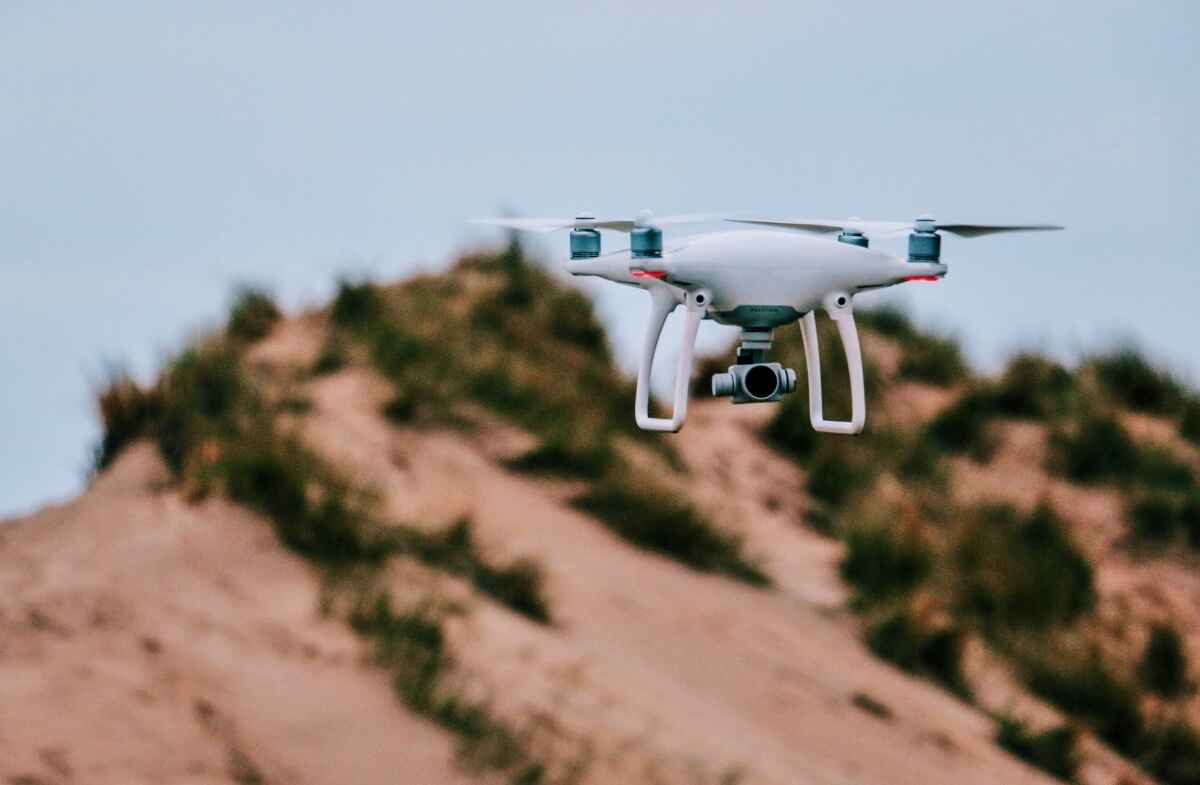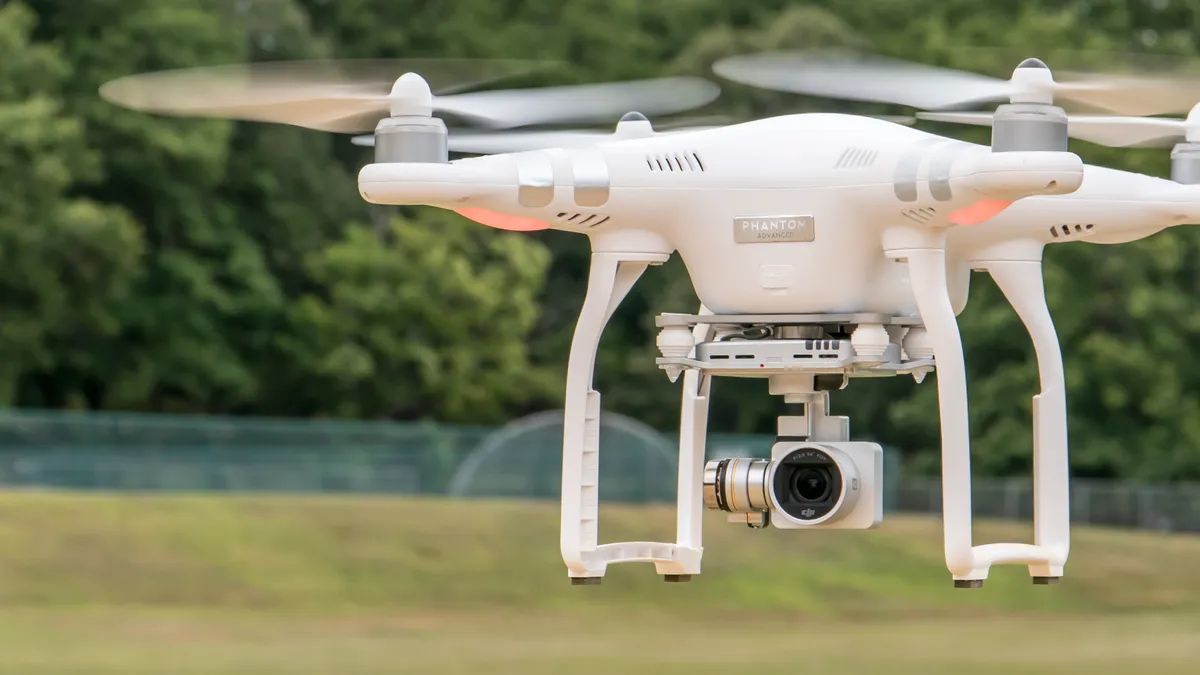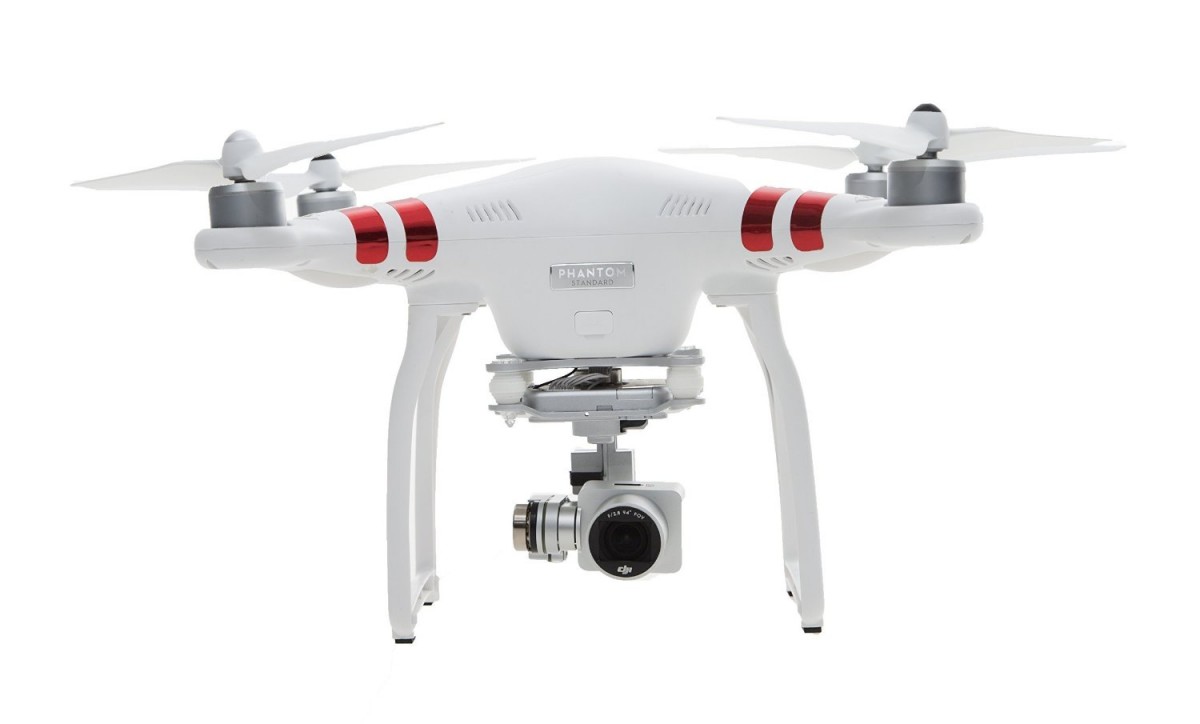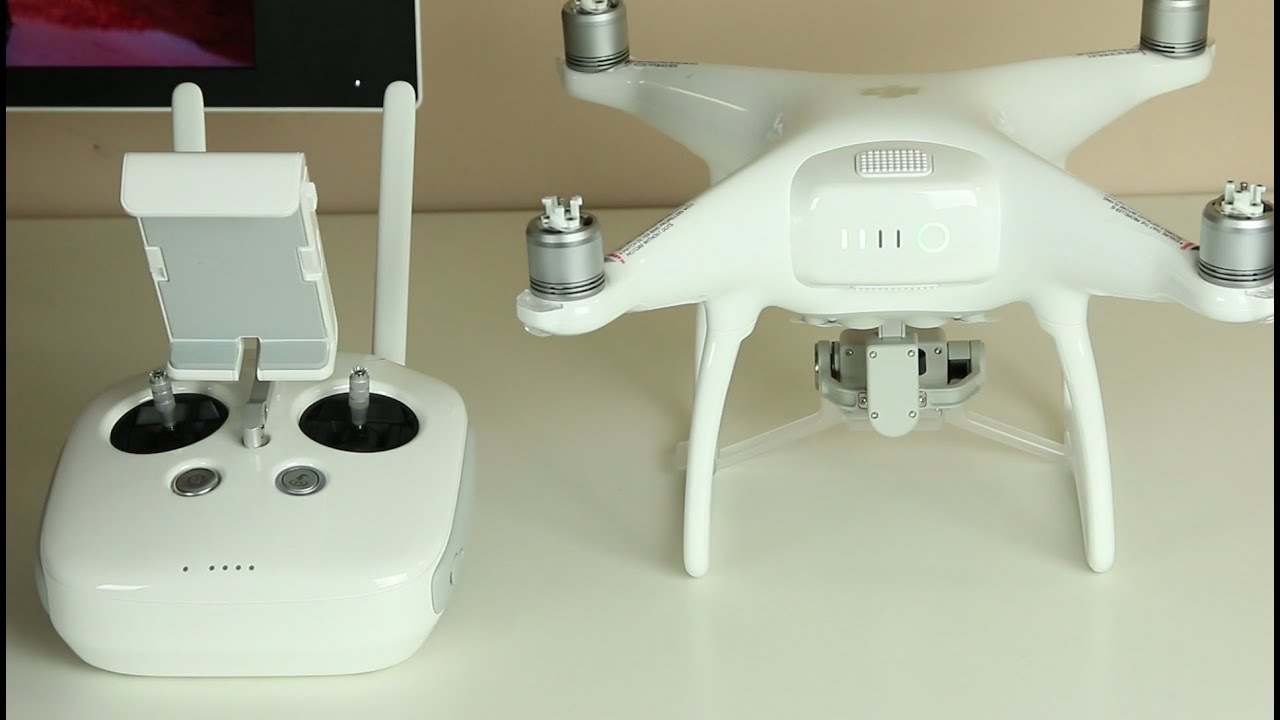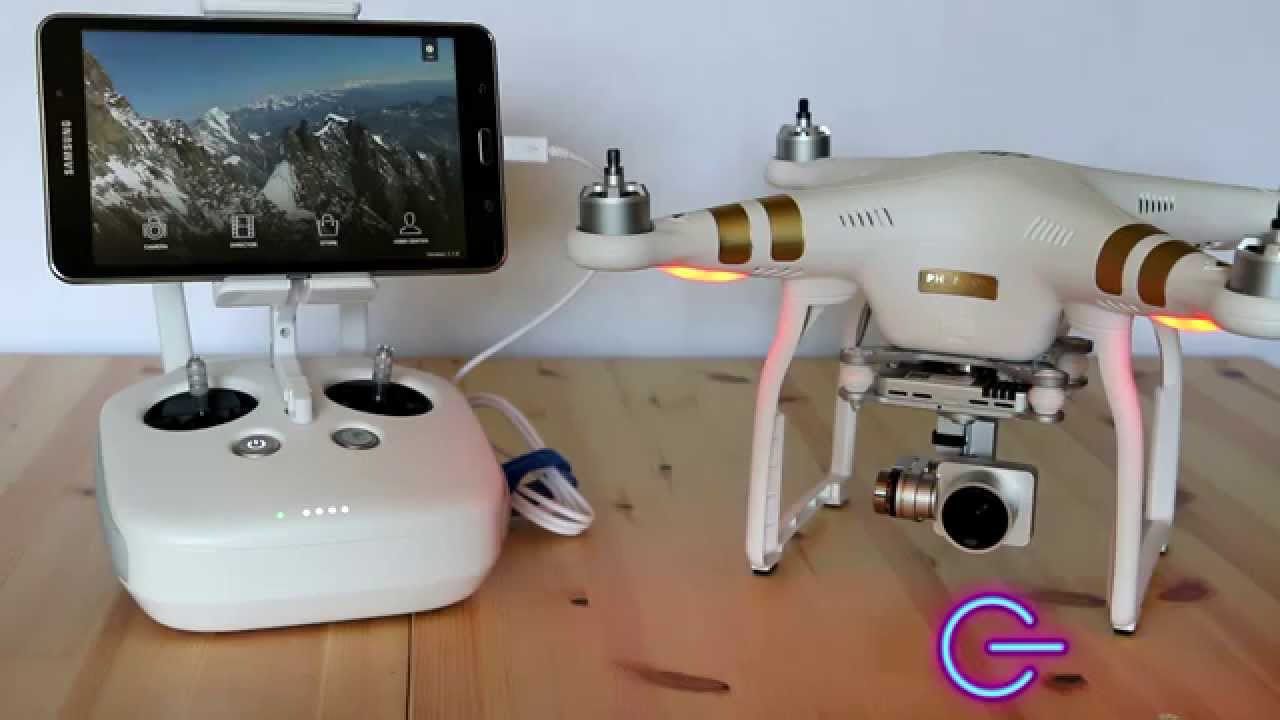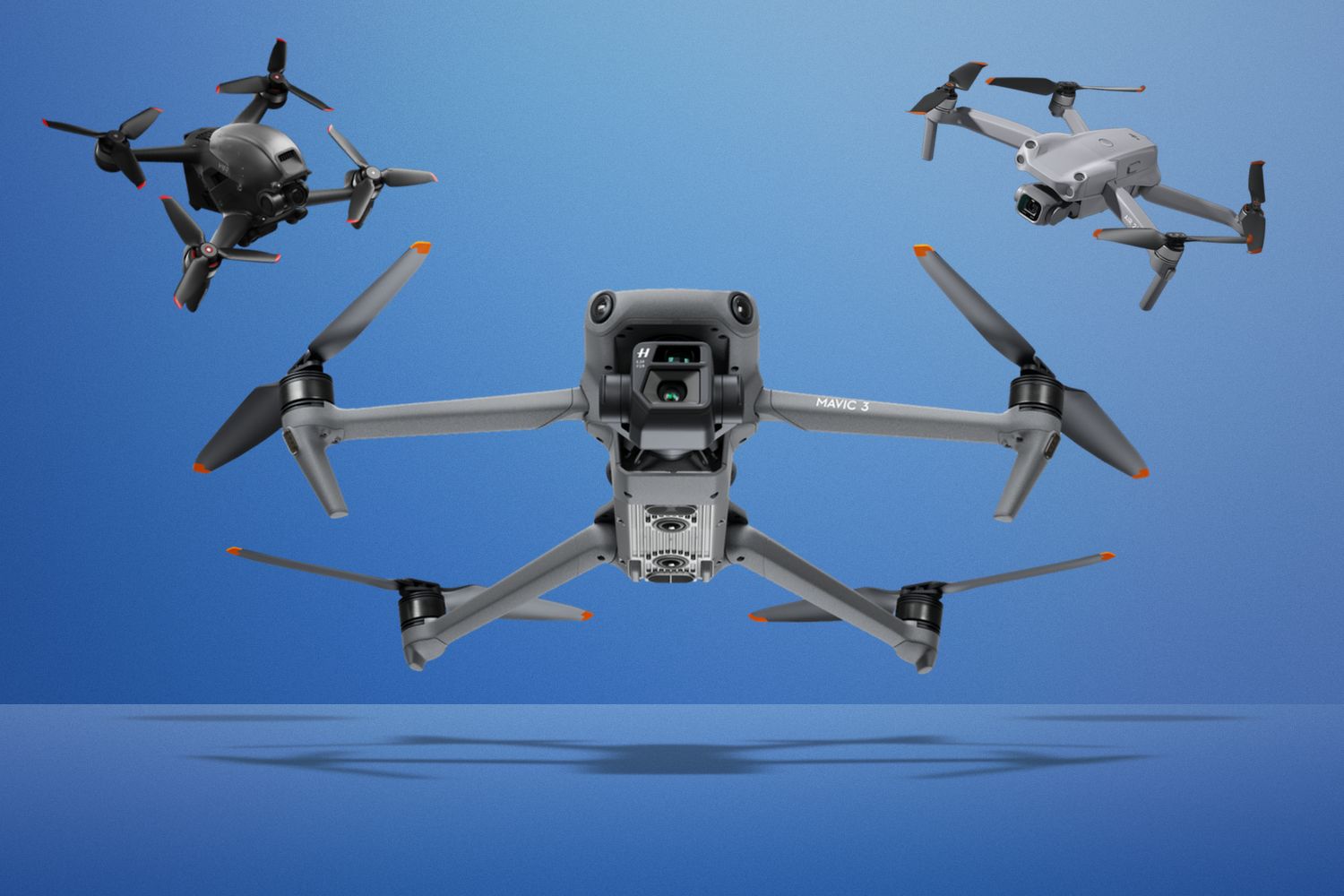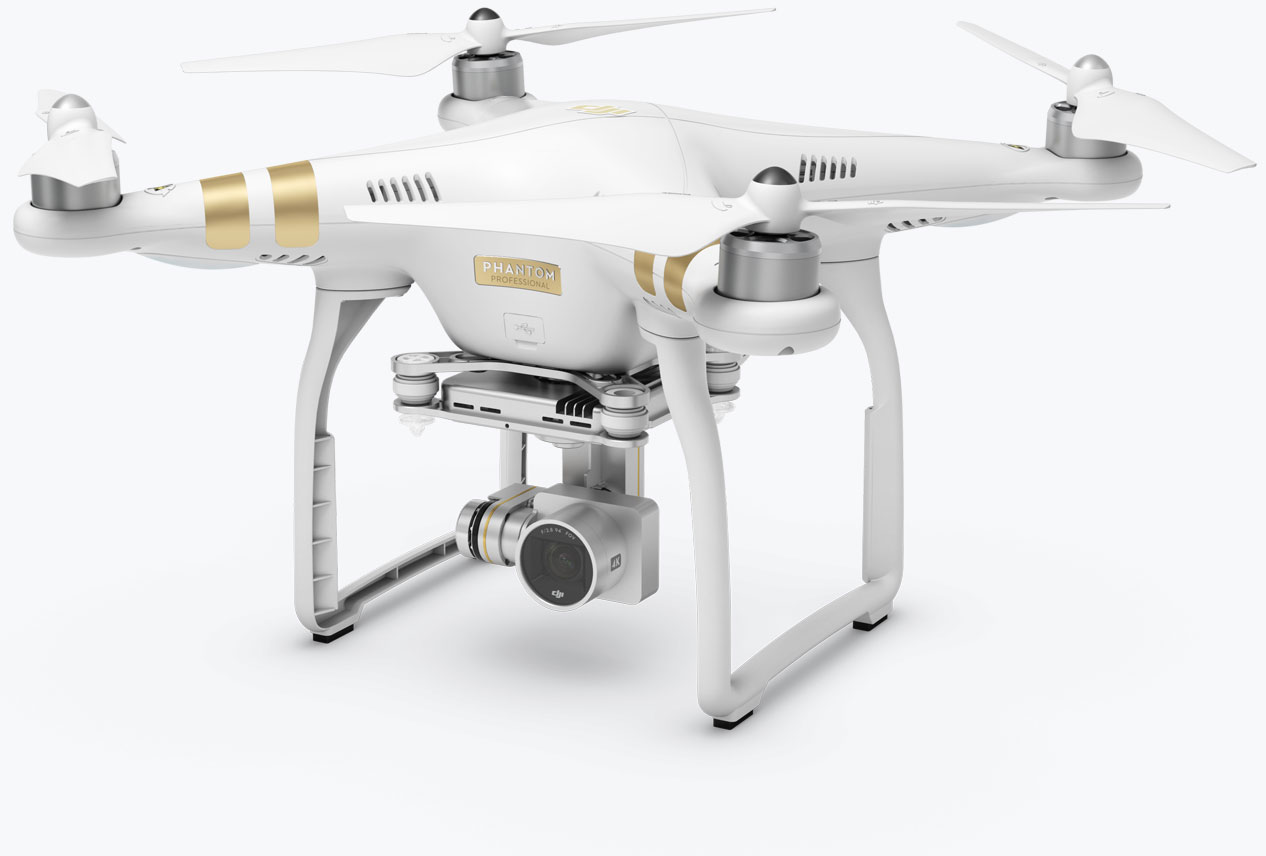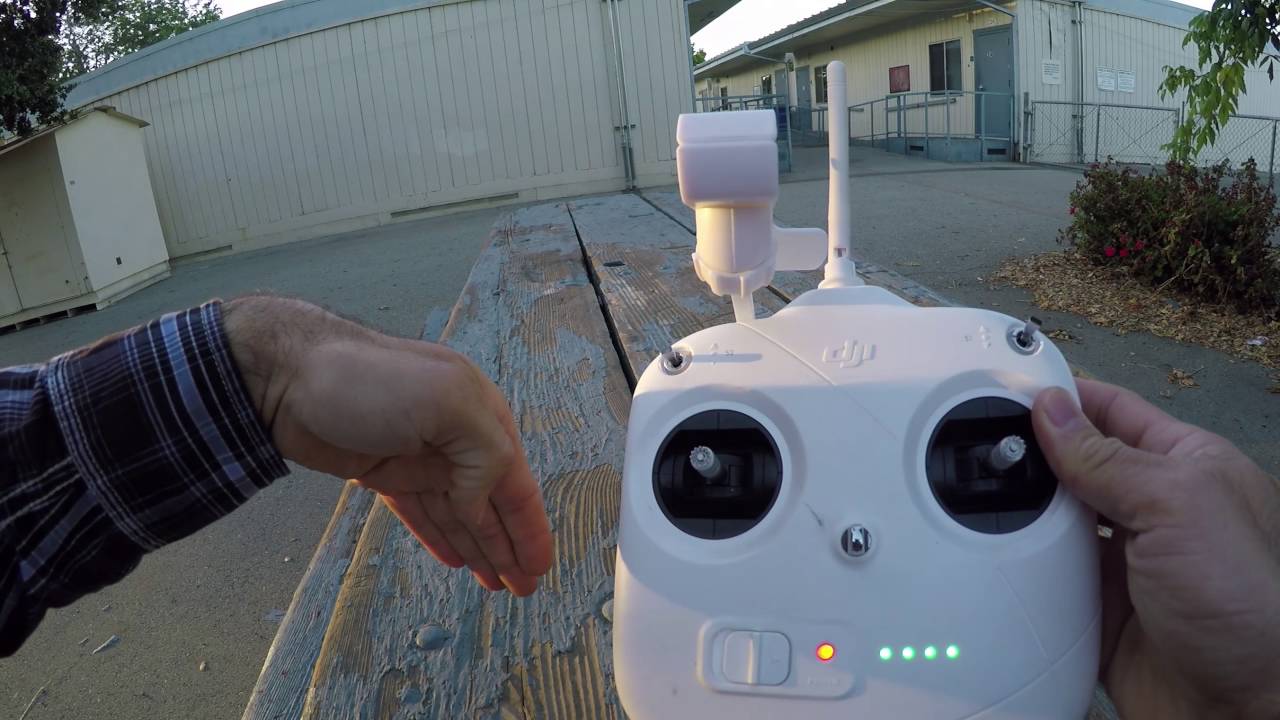Introduction
Welcome to the world of aerial photography and videography with the DJI Phantom 4! Whether you are a hobbyist or a professional, this drone offers an incredible experience and endless creative possibilities. With its advanced features and intuitive controls, the Phantom 4 allows you to capture stunning images and videos from perspectives that were previously impossible to achieve.
In this comprehensive guide, we will take you through everything you need to know to get started with your DJI Phantom 4. From unboxing and setup to mastering flight controls and capturing breathtaking footage, we will cover it all.
The Phantom 4 is equipped with cutting-edge technology that makes it one of the most user-friendly drones on the market. Its intelligent flight features, such as obstacle avoidance and object tracking, make it accessible to beginners while also providing advanced capabilities for seasoned pilots. Whether you want to explore new aerial photography techniques, create cinematic videos, or simply enjoy the thrill of flying, the Phantom 4 is the perfect tool.
Throughout this guide, we will provide step-by-step instructions, tips, and troubleshooting advice to ensure that you have a smooth and successful flying experience. We will also emphasize the importance of safety and responsible drone operation, as it is crucial to be aware of rules and regulations governing drone use in your area.
So, if you are ready to embark on an exciting adventure in the world of drone photography and videography, continue reading to discover how to make the most out of your DJI Phantom 4.
Unboxing and Setup
Congratulations on your new DJI Phantom 4! Let’s start by unboxing and setting up your drone so that you can get ready to take to the skies.
When you first open the box, you will find the Phantom 4 drone, the remote controller, propellers, a battery charger, and various cables and accessories. Start by carefully removing each item from the packaging and laying them out on a clean, flat surface.
The first step is to attach the propellers to the drone. Each propeller is labeled with either “CW” (clockwise) or “CCW” (counterclockwise). Match the propellers to the corresponding motors on the drone and twist them in a clockwise direction until they lock into place. Make sure they are securely fastened before proceeding.
Next, locate the battery compartment on the back of the drone and insert the fully charged battery. Push it gently until it clicks into place. The battery indicator lights on the drone will illuminate, indicating the battery level. It is important to always start with a fully charged battery to ensure a longer flight time.
Now, let’s set up the remote controller. Remove the phone holder from the bottom of the controller and adjust it to fit your mobile device. Place your smartphone or tablet in the holder and connect it to the controller using the appropriate cable. Ensure that the device is securely attached and positioned for optimal visibility.
Before powering on the drone, it is essential to check for any firmware updates. Connect your mobile device to the internet and launch the DJI Go app. The app will automatically check for updates and prompt you to install them if needed. Follow the on-screen instructions to complete the firmware update process. This ensures that your drone is running the latest software for enhanced performance and stability.
Once the firmware update is complete, it’s time to power on the drone and the remote controller. Press and hold the power button on the drone until the lights on the front and rear start to flash. On the remote controller, press and hold the power button until the LED lights on the front panel illuminate.
To establish a connection between the drone and the controller, toggle the flight mode switch on the top left corner of the remote controller to P mode. The DJI Go app will guide you through the pairing process, and once connected, you will see a live video feed from the drone’s camera on your mobile device screen.
Finally, it’s important to familiarize yourself with the control layout on the remote controller. Take a moment to understand the functions and locations of the joysticks, buttons, and switches. This will give you a better understanding of how to maneuver the drone during flight.
With the unboxing and setup process complete, you are now ready to move on to the next steps in mastering your DJI Phantom 4. Get ready to explore the skies and capture stunning aerial footage!
Understanding the Phantom 4 Features
The DJI Phantom 4 is packed with a range of incredible features that make it a standout choice in the world of drones. Understanding these features will not only help you maximize your flying experience but also enable you to capture stunning aerial imagery. Let’s dive into some of the key features of the Phantom 4:
1. Obstacle Avoidance: The Phantom 4 is equipped with advanced sensors and computer vision technology that allows it to detect and avoid obstacles in its flight path. This feature is incredibly useful in preventing collisions and ensuring safe flying. Obstacle avoidance works in both indoor and outdoor environments, giving you peace of mind while navigating tight spaces or challenging terrains.
2. ActiveTrack: This intelligent feature allows the drone to recognize and actively track a moving subject. Simply select the subject on your mobile device screen, and the Phantom 4 will autonomously follow and keep it in the frame, even as it moves. This opens up a world of creative possibilities for capturing dynamic videos and action-packed shots.
3. TapFly: TapFly allows you to control the drone’s flight path by simply tapping on your mobile device screen. You can choose a destination on the screen, and the Phantom 4 will automatically fly towards it, avoiding obstacles along the way. This feature is perfect for capturing smooth and cinematic shots without the need for complex manual controls.
4. Return to Home: With a single press of a button, the Phantom 4 will automatically return to its takeoff location. This is especially useful in situations where you lose sight of the drone or if the battery is running low. The drone will fly back and land safely, ensuring that you never have to worry about losing your valuable equipment.
5. Sport Mode: If you’re looking for an adrenaline-filled flying experience, the Phantom 4’s Sport Mode is perfect for you. Engage Sport Mode, and the drone will unlock its maximum speed and agility, allowing for thrilling maneuvers and high-speed flights. This mode is ideal for capturing fast-moving subjects or for those who simply enjoy the thrill of flying at high velocities.
6. Intelligent Flight Battery: The Phantom 4 comes with a high-capacity intelligent flight battery that provides an extended flight time. This means that you can spend more time in the air, capturing breathtaking shots without worrying about running out of power. The intelligent battery also provides real-time information about its remaining charge, ensuring that you can plan your flights accordingly.
These are just a few of the standout features that make the DJI Phantom 4 an incredibly powerful and versatile drone. Familiarizing yourself with these features will enable you to unlock the full potential of your drone and take your aerial photography and videography to new heights.
Pre-flight Checklist
Before taking off with your DJI Phantom 4, it is crucial to perform a pre-flight checklist to ensure the safety and optimal performance of your drone. Going through this checklist will help you identify and address any potential issues and minimize the risk of accidents. Let’s take a look at the essential items to include in your pre-flight checklist:
1. Battery Check: Start by checking the battery level of both your drone and the remote controller. Ensure that they are adequately charged for the intended flight duration. A low battery can lead to a loss of control or an unexpected shutdown mid-flight.
2. Propeller Inspection: Examine the propellers for any signs of damage, such as cracks or chips. Replace any damaged propellers before flying to avoid potential flight instability or accidents.
3. Camera and Gimbal Calibration: Perform a calibration of the camera and gimbal to ensure smooth and stable footage. Follow the manufacturer’s instructions or the DJI Go app prompts to complete the calibration process.
4. Firmware Update: Check for any firmware updates for the drone, remote controller, and the DJI Go app. Keeping the firmware up to date is crucial for optimal performance and compatibility with the latest features and functions.
5. GPS Signal: Verify that the drone has acquired a strong GPS signal before taking off. A strong GPS signal ensures accurate positioning and stability during flight.
6. Vision System Check: If your Phantom 4 is equipped with obstacle avoidance sensors, ensure that they are functioning correctly. Check for any dirt or obstructions that may impede their performance and clean them if necessary.
7. Flight Environment Assessment: Take a careful look at your flight environment. Identify any potential obstacles, such as trees, power lines, or buildings, that could interfere with your flight path. Choose an open area away from crowded spaces and comply with local regulations regarding drone use.
8. Weather Conditions: Check the weather forecast and avoid flying in strong winds, rain, or severe weather conditions. Adverse weather can affect flight stability and compromise safety.
9. Emergency Procedures: Familiarize yourself with the emergency procedures for your drone, such as initiating an emergency landing or regaining control in case of a signal loss. Being prepared for unexpected situations can help prevent accidents.
10. Pre-flight Test Flight: Before engaging in a full flight, perform a short test flight to ensure that all systems are functioning correctly. Take note of any irregular behavior or performance issues. If you notice any problems, troubleshoot or seek technical support before proceeding with your planned flight.
By diligently following this pre-flight checklist, you can significantly reduce the chances of accidents and enhance the overall safety of your flying experience. Remember, a cautious and well-prepared pilot is a responsible pilot.
Basic Flight Controls
Mastering the basic flight controls of your DJI Phantom 4 is essential to ensure a smooth and controlled flying experience. Understanding how to maneuver the drone accurately will allow you to capture stunning aerial shots with ease. Let’s explore the basic flight controls of the Phantom 4:
1. Takeoff and Landing: To take off, press the takeoff button on the DJI Go app or the remote controller. The motors will start, and the drone will ascend to a hover. To land, slowly descend the drone until it touches the ground. Use the throttle stick to control the descent rate and ensure a smooth landing.
2. Throttle Control: The throttle control, also known as the left stick on the remote controller, is used to control the drone’s altitude. Pushing the throttle stick forward increases the altitude, while pulling it backward decreases the altitude. Use small adjustments for a gradual and controlled ascent or descent.
3. Yaw Control: The yaw control, located on the left stick, rotates the drone clockwise or counterclockwise. Moving the stick to the left rotates the drone counterclockwise, while moving it to the right rotates it clockwise. Use the yaw control to change the direction the drone is facing.
4. Roll and Pitch Control: The roll and pitch controls, located on the right stick, allow you to move the drone horizontally. Pushing the right stick forward or backward controls the pitch, which moves the drone forward or backward. Moving the right stick left or right controls the roll, which moves the drone sideways.
5. Intelligent Flight Modes: The Phantom 4 offers various intelligent flight modes that automate certain flight maneuvers. These include modes such as ActiveTrack, TapFly, and Waypoints. Familiarize yourself with the specific controls and settings related to these modes to take advantage of their unique capabilities.
6. Gimbal Control: The gimbal control allows you to adjust the camera’s angle during flight. Use the dedicated gimbal control buttons on the remote controller to tilt the camera up or down. This enables you to frame your shots and capture different perspectives without changing the drone’s position.
7. Emergency Stop: In case of an emergency or loss of control, the Phantom 4 comes equipped with an emergency stop function. Press and hold the flight pause button on the remote controller to stop the motors immediately and safely bring the drone to a halt.
8. Flight Mode Selection: The Phantom 4 offers different flight modes, including P mode, S mode, and A mode. P mode, or Positioning mode, is the default mode that combines GPS, visual, and ultrasonic positioning for stable and precise flight. S mode, or Sport mode, unleashes the drone’s maximum speed and agility for more dynamic maneuvers. A mode, or Attitude mode, disables GPS positioning and relies solely on the drone’s sensors for control.
Understanding and practicing these basic flight controls will give you the confidence and ability to fly your DJI Phantom 4 smoothly and precisely. Experiment with different movements, practice hovering at different altitudes, and gradually explore more advanced flight techniques as you become more comfortable with the controls.
Taking Off and Landing
Knowing how to take off and land your DJI Phantom 4 safely and accurately is fundamental to a successful flying experience. Whether you’re a beginner or an experienced pilot, understanding the proper procedures for takeoff and landing is essential. Let’s explore the steps for taking off and landing your Phantom 4:
1. Pre-flight Check: Before taking off, ensure that you have completed the pre-flight checklist outlined earlier in this guide. Check the battery level, inspect the propellers, and ensure that the drone is properly calibrated and ready for flight.
2. Find a Suitable Takeoff Location: Choose an open area free from obstacles and people, preferably a level surface with minimal wind. Avoid launching your drone from surfaces that could interfere with the gimbal or propellers, such as tall grass or loose gravel.
3. Power on the Drone and Remote Controller: Press and hold the power button on the drone until the lights start flashing. Then, turn on the remote controller by pressing and holding its power button until the LED lights illuminate.
4. Establish a Connection: Ensure that the drone and the remote controller are properly connected. Check the DJI Go app on your mobile device for a stable connection and a live video feed from the drone’s camera. Confirm that the GPS signal is strong, as indicated by the GPS icon on the screen.
5. Auto Takeoff (Optional): If your Phantom 4 has an auto takeoff feature, you can initiate the process by pressing the takeoff button on the DJI Go app or the remote controller. The drone will ascend to a safe altitude and hover in a stationary position.
6. Manual Takeoff: If your drone does not have an auto takeoff feature or if you prefer manual control, you can take off manually by smoothly pushing the throttle stick upward. Gradually increase the throttle to avoid any sudden jerks or rapid ascents.
7. Fly in a Hover: Once your drone is airborne, allow it to hover in a stable position for a few moments. Ensure that it is responding correctly to your control inputs and that it remains stable in the air. This will give you the opportunity to make any necessary adjustments before starting your flight.
8. Flight Mode Selection: If desired, switch to the flight mode appropriate for your desired flying experience. P mode is recommended for most situations, as it provides stability and GPS position holding. S mode is best for faster flights and more dynamic movements, while A mode offers manual control without GPS assistance.
9. Landing Preparation: Before landing, ensure that you have enough remaining battery power for a safe descent. Plan your landing spot and check the area for any potential hazards or obstacles.
10. Manual Landing: To land manually, slowly reduce the throttle by pulling the throttle stick downward. Descend the drone in a controlled manner, gradually decreasing its altitude. Aim for a smooth touchdown on a level surface.
11. Auto Landing (Optional): If your Phantom 4 has an auto landing feature, you can initiate it by pressing the landing button on the DJI Go app or the remote controller. The drone will automatically descend and land on its own. Make sure to monitor the landing process and be ready to take control if needed.
12. Post-flight Checks: After landing, power off the drone and remote controller. Conduct a visual inspection of the drone, checking for any damage or abnormalities. After a successful flight, it’s also a good practice to recharge the batteries and prepare for your next adventure.
By following these steps for taking off and landing your DJI Phantom 4, you can ensure safe operations and a smooth flying experience. Remember to always be mindful of your surroundings, follow local regulations, and prioritize the safety of yourself and others when operating your drone.
Navigating the Phantom 4
The DJI Phantom 4 offers a range of navigation options that allow you to control its flight path and explore the world from above. Understanding how to navigate your drone efficiently is key to capturing the best aerial footage. Let’s explore some essential techniques for navigating your Phantom 4:
1. Basic Controls: Familiarize yourself with the basic flight controls mentioned earlier in this guide. Practice using the throttle, yaw, roll, and pitch controls to maneuver the drone smoothly in the desired direction.
2. Slow and Smooth Movements: Avoid making abrupt or jerky movements while flying. Instead, aim for slow and smooth control inputs to capture steady footage and maintain stability during flight. Gradually increase your control inputs to ensure a more graceful flight.
3. Circle and Orbit: One popular technique for capturing dynamic shots is to circle or orbit around a subject. To do this, set up a point of interest and use the yaw control to circle around it. Adjust the radius and speed to achieve the desired effect.
4. Waypoints: Utilize the Waypoints feature in the DJI Go app to create a precise flight path for your drone. Simply mark a series of waypoints on the map, and the drone will automatically follow that predetermined route. This is particularly useful for capturing consistent footage or exploring specific areas.
5. Point of Interest Mode: In this mode, you can set a specific location or object as the point of interest, and the drone will continuously circle around it while keeping it in the frame. This is perfect for creating captivating footage of landmarks or dynamic scenes.
6. Avoiding Obstacles: The Phantom 4 is equipped with obstacle avoidance sensors that can help prevent collisions. However, it is crucial to remain vigilant and avoid flying too close to obstacles. Be aware of your surroundings and always maintain a safe distance from buildings, trees, and other potential hazards.
7. Follow Me Mode: Activate the Follow Me mode to have the drone autonomously track and follow your movements. This is ideal for capturing exciting action shots or engaging in outdoor activities while keeping the drone focused on you.
8. Return to Home: Whenever you need to bring the drone back to its original takeoff location, simply activate the Return to Home feature. The Phantom 4 will automatically fly back and land safely at the designated spot.
9. Flight Range: Be mindful of the drone’s flight range limitations and avoid flying beyond the specified distance. This will ensure a reliable connection and prevent the risk of losing control or damaging the aircraft.
10. Follow Local Regulations: Always adhere to local laws and regulations regarding drone operation, including flight restrictions, airspace rules, and privacy guidelines. Familiarize yourself with the specific regulations in your area before flying your Phantom 4.
By practicing these navigation techniques and understanding the features of the DJI Phantom 4, you can navigate confidently and capture stunning aerial footage. Experiment with different flight patterns, explore new locations, and push the boundaries of your creativity while always prioritizing safety and respecting the regulations in place.
Using Intelligent Flight Modes
The DJI Phantom 4 comes equipped with a range of intelligent flight modes that automate specific flight maneuvers and open up exciting creative possibilities. These intelligent flight modes allow you to capture unique shots and videos effortlessly. Let’s explore some of the intelligent flight modes available on the Phantom 4:
1. ActiveTrack: With ActiveTrack, you can select a subject on your mobile device screen, and the Phantom 4 will autonomously track and follow it. This is perfect for capturing dynamic footage of moving objects or people. The drone uses advanced computer vision technology to keep the subject in the frame, even as it moves around.
2. TapFly: TapFly allows you to tap on your mobile device screen to set a destination, and the drone will automatically fly towards it. This mode is great for capturing smooth and seamless shots without requiring complex joystick control. TapFly supports both forward and backward flights, opening up creative possibilities for unique camera movements.
3. Waypoints: Waypoints mode enables you to pre-plan a flight path by marking specific locations on the map in the DJI Go app. The Phantom 4 will then autonomously follow the designated waypoints, allowing you to focus on capturing footage or conducting aerial surveys. Waypoints mode provides precise control over the drone’s path and is a valuable tool for repeatable and consistent flights.
4. Point of Interest: In Point of Interest mode, you can choose a specific location or object as the center point, and the Phantom 4 will automatically circle around it while keeping it in the frame. This is ideal for capturing captivating footage of landmarks, architecture, or other points of interest. Adjust the radius and speed to achieve different cinematic effects.
5. Follow Me: Activate Follow Me mode, and the Phantom 4 will track and follow your movements while keeping you in the frame. This is great for capturing footage of outdoor activities such as cycling, running, or any other dynamic movement. The drone will intelligently track your location, ensuring you stay within the frame as you move.
6. Home Lock and Course Lock: Home Lock allows you to lock the drone’s forward direction to your current position, regardless of its orientation. This is useful when operating the drone in more complex flight situations or when flying in challenging environments. Course Lock, on the other hand, allows you to lock the drone’s current flight path and adjust the camera independently, opening up creative possibilities while maintaining a stable flight route.
7. QuickShot: QuickShot modes provide a variety of automated and cinematic flight maneuvers to capture professional-quality shots with just a few taps. These modes include Dronie, Circle, Helix, and Rocket, each offering a unique flight pattern and camera movement to add flair and creativity to your aerial footage.
Intelligent flight modes on the Phantom 4 provide incredible opportunities to capture stunning shots with minimal effort and expertise. Experiment with different modes and techniques to bring your creativity to new heights and unlock the full potential of your drone.
Adjusting Camera Settings
The DJI Phantom 4 is equipped with a high-quality camera that allows you to capture stunning photos and videos from the sky. Understanding how to adjust the camera settings will enable you to achieve the desired look and enhance the overall quality of your aerial footage. Let’s explore some key camera settings on the Phantom 4:
1. Exposure: Adjusting the exposure settings allows you to control the brightness or darkness of your images or videos. You can manually adjust the exposure by using the exposure compensation slider in the DJI Go app or by using the manual mode settings. Experiment with the exposure settings to achieve the optimal balance between the highlights and shadows in your shots.
2. White Balance: The white balance setting determines the color tone of your images or videos. It is essential to set the white balance correctly to capture accurate colors in different lighting conditions. The Phantom 4 offers various white balance presets such as sunny, cloudy, fluorescent, and custom settings. Select the appropriate white balance mode based on the lighting conditions of your shooting environment.
3. Image Format: The Phantom 4 allows you to choose between JPEG and RAW image formats. JPEG files are smaller and more easily accessible, while RAW files contain uncompressed image data, allowing for greater flexibility in post-processing. If you plan to make significant adjustments to your photos during editing, shooting in RAW format is recommended.
4. Video Resolution and Frame Rate: The Phantom 4 offers various video resolution options, including 4K, 2.7K, and 1080p. Higher resolutions provide greater detail but require more storage space. Additionally, you can adjust the frame rate to control the smoothness of your videos. Higher frame rates result in smoother motion, while lower frame rates can create a more cinematic look.
5. Photo Modes: The Phantom 4 offers different photo modes, such as Single Shot, Burst Mode, and Interval Shooting. Single Shot captures a single photo with each press of the shutter button, while Burst Mode captures a series of rapid-fire photos. Interval Shooting allows you to capture a sequence of photos at regular intervals, which is useful for time-lapse photography.
6. Focus Mode: The Phantom 4 camera has autofocus capabilities, but you can also manually adjust the focus by tapping on your mobile device screen in the DJI Go app. This allows you to select a specific focal point for your shots, ensuring sharp and well-focused images.
7. ISO and Shutter Speed: The ISO setting controls the sensitivity to light, while the shutter speed determines the exposure time of each frame. A higher ISO allows for faster shutter speeds in low-light conditions, while a lower ISO results in less noise in well-lit environments. Adjusting the ISO and shutter speed settings offers greater control over the exposure and overall image quality.
8. Gimbal Settings: The Phantom 4’s gimbal settings allow you to adjust the pitch, roll, and yaw of the camera during flight. These settings enable you to capture unique angles and perspectives, adding variety to your footage. Experiment with different gimbal settings to find the best composition for your shots.
By understanding and adjusting these camera settings, you can have more control over the final look of your photos and videos. Take the time to explore and experiment with different settings to achieve your desired aesthetic and capture breathtaking aerial footage with your DJI Phantom 4.
Capturing Photos and Videos
The DJI Phantom 4 opens up a world of creative possibilities for capturing stunning aerial photos and videos. With its high-resolution camera and advanced features, you can capture breathtaking shots from unique perspectives. Let’s explore some techniques and tips for capturing the best photos and videos with your Phantom 4:
1. Composition: Pay attention to the composition of your shots. Use the rule of thirds or leading lines to create visually appealing and balanced images. Experiment with different angles and perspectives to add depth and interest to your photos and videos.
2. Lighting: Take advantage of good lighting conditions for optimal results. Early mornings or late afternoons, known as the golden hours, provide soft and warm lighting, creating a more pleasing aesthetic. Avoid shooting during midday when the sunlight is harsh and can create shadows.
3. Manual Camera Control: While the Phantom 4 offers automatic camera settings, consider using manual controls for greater control over exposure, focus, and other aspects of your shots. Taking control of these settings allows you to customize the look and feel of your images and videos.
4. Rule of Hyperfocal Distance: When capturing landscape shots, consider using the rule of hyperfocal distance to ensure that objects in the foreground and background are in sharp focus. Adjusting the aperture and focusing at the hyperfocal distance ensures maximum depth of field, resulting in sharp details throughout the image.
5. ND Filters: Neutral Density (ND) filters are useful accessories that help control the amount of light entering the camera. They are beneficial in bright conditions or when shooting long exposures, helping to achieve a proper exposure without overexposing the image.
6. Utilize Intelligent Flight Modes: Take advantage of the intelligent flight modes, such as ActiveTrack, Waypoints, and Point of Interest, to capture smooth and dynamic shots. These features automate specific flight patterns or tracking, allowing you to focus on framing and capturing the perfect shot.
7. Experiment with Slow Motion and Time-lapse: The Phantom 4 supports slow-motion and time-lapse modes. Slow-motion is perfect for capturing dramatic and immersive footage, while time-lapse is ideal for showing the passage of time and capturing stunning transitions in both landscapes and urban environments.
8. Stabilization Techniques: To achieve smooth and stable footage, practice gentle and gradual movements with the drone’s controls. Avoid making sudden jerks or erratic movements that can result in shaky footage. The gimbal stabilization system in the Phantom 4 helps to keep your shots steady, but smooth piloting techniques contribute to overall stability.
9. Post-processing: After capturing your photos and videos, take advantage of post-processing software to enhance and refine your shots. Adjustments in contrast, saturation, and white balance can help elevate your imagery to the next level. Experiment with different editing techniques to achieve your desired look.
10. Respect Privacy and Regulations: When capturing photos and videos with your Phantom 4, be mindful of privacy concerns and adhere to local regulations regarding drone usage. Respect people’s privacy and avoid flying in restricted areas or where it may pose safety risks. Familiarize yourself with the regulations in your area and obtain any necessary permissions before flying.
With these tips in mind, you can capture incredible aerial photos and videos with your DJI Phantom 4. Embark on creative adventures, experiment with different techniques, and share your unique perspective of the world through captivating imagery.
Safe Flying Practices
Ensuring safety is paramount when flying your DJI Phantom 4. Following safe flying practices not only protects you and others but also helps maintain a positive image for responsible drone pilots. Let’s explore some essential safety guidelines to follow when operating your Phantom 4:
1. Read and Follow the Manual: Familiarize yourself with the user manual provided by DJI. Understand the drone’s features, limitations, and recommended operating procedures. Follow the manufacturer’s instructions for assembly, maintenance, and safe operation.
2. Pre-flight Checklist: Perform a pre-flight checklist every time you plan to fly your drone. Verify the battery level, inspect the propellers, and check for any system updates. Assess the flight environment for potential hazards or restrictions. This checklist enhances safety by ensuring that the drone and its components are in optimal condition before takeoff.
3. Fly in Open Spaces: Choose an open area away from congested areas, buildings, and people. Open spaces provide ample room for maneuvering and help minimize the risk of accidents. Avoid flying near airports, stadiums, or other restricted zones.
4. Maintain Visual Line of Sight: Always keep your drone within your visual line of sight during flight. Maintaining visual contact with the drone allows you to monitor its position, altitude, and flight path. This helps you avoid collisions with other objects and maintain control of the drone at all times.
5. Respect Privacy: Respect the privacy of others while flying your drone. Avoid capturing footage or images of individuals without their consent. Be mindful of private property and airspace restrictions, and always comply with local privacy laws and regulations.
6. Observe Weather Conditions: Pay close attention to weather conditions before and during your flight. Flying in adverse weather conditions such as high winds, rain, or fog can compromise the stability and control of your drone. Be aware of changing weather patterns and land immediately if conditions deteriorate.
7. Maintain Reliable Signal Connection: Ensure a stable and reliable signal connection between the drone and the remote controller. Keep a safe distance from electromagnetic interference sources such as power lines, radio stations, or other electronic devices that can disrupt the communication signal.
8. Fly Responsibly and Ethically: Be a responsible drone pilot by following local regulations and guidelines. Fly in a considerate and ethical manner, respecting the rights and safety of others. Avoid disturbing wildlife and nesting areas, as well as causing disturbances in sensitive areas such as nature reserves or protected sites.
9. Be Prepared for Emergencies: Familiarize yourself with the emergency procedures provided by the manufacturer. Be prepared to handle unexpected situations such as signal loss, battery failure, or sudden changes in weather conditions. Maintain situational awareness and act calmly and promptly in emergencies.
10. Continuously Improve Your Skills: Keep learning and improving your drone piloting skills. Practice flying in different conditions and environments to enhance your control and confidence. Stay updated with the latest industry trends, regulations, and technological advancements to ensure safe and responsible drone use.
By adhering to these safe flying practices, you can enjoy an enjoyable and accident-free flying experience with your DJI Phantom 4. Promote responsible drone usage within the community and contribute to the positive development and reputation of the drone industry.
Troubleshooting and Tips
While operating your DJI Phantom 4, you may encounter occasional challenges or unexpected situations. Knowing how to troubleshoot common issues and having some handy tips can help you overcome hurdles and enhance your overall drone flying experience. Let’s explore some troubleshooting techniques and tips for the DJI Phantom 4:
1. GPS Signal Issues: If you’re experiencing GPS signal issues, ensure that you are in an open area away from obstructions such as tall buildings or dense trees. Calibrate the compass and check for any electromagnetic interference that may disrupt the signal. Wait for a strong GPS signal before taking off.
2. Battery Performance: To optimize your battery performance, store and transport them at the proper temperature range recommended by the manufacturer. Ensure that the battery contacts are clean and not damaged. It’s also advisable to fully charge and discharge the battery at least once every few months for optimal battery health.
3. Firmware Updates: Regularly check for firmware updates for your drone, remote controller, and the DJI Go app. Updating the firmware ensures the stability, performance enhancements, and compatibility with the latest features and functions.
4. Fly in Safe Wind Conditions: Be mindful of the wind conditions before taking off. Strong winds can affect the stability and control of the drone. Avoid flying in windy conditions, especially if you’re a beginner or unfamiliar with flying in challenging weather.
5. Camera Settings and Storage: Use high-speed memory cards that meet the minimum requirements recommended by DJI to ensure smooth recording and prevent data corruption. Regularly format the memory card to keep it in optimal condition. Check your camera settings before capturing footage to ensure you’re capturing images and videos of the desired quality.
6. Propeller Issues: Inspect the propellers before and after each flight for any signs of damage, such as cracks, chips, or loose screws. Replace damaged propellers promptly to avoid any flight instability or accidents.
7. Calibrating the Compass and IMU: If you’re experiencing flight control or stability issues, consider calibrating the compass and the Inertial Measurement Unit (IMU). Follow the manufacturer’s instructions or the DJI Go app prompts to complete the compass and IMU calibration processes.
8. Flight Log Analysis: In case of any issues or irregularities during flight, reviewing the flight logs can provide insights into what might have caused the problem. The DJI Go app provides detailed flight data logs that can be analyzed to identify and troubleshoot any technical or performance-related issues.
9. Learn from Others: Join online communities or forums where drone enthusiasts and experienced pilots share their knowledge and experiences. Learn from others’ insights and experiences to enhance your understanding of the Phantom 4 and troubleshoot any challenges you may encounter.
10. Practice, Practice, Practice: The more you practice flying your Phantom 4, the more comfortable and proficient you’ll become. Regularly practice your flying skills in an open area, gradually pushing your limits while ensuring safety at all times. This will help you handle the drone confidently and troubleshoot any issues that may arise.
By applying these troubleshooting techniques and incorporating these practical tips, you’ll be well-equipped to overcome any common challenges and optimize your DJI Phantom 4 flying experience. Stay curious, be prepared, and embrace the learning process for a rewarding and enjoyable drone piloting journey.
Conclusion
Congratulations on completing this comprehensive guide to flying your DJI Phantom 4! We have covered a wide range of topics, from unboxing and setup to mastering flight controls, capturing photos and videos, and practicing safe flying techniques. Throughout this journey, you’ve gained valuable knowledge and insights into getting the most out of your drone.
The DJI Phantom 4 offers a remarkable aerial photography and videography experience. Its advanced features, intelligent flight modes, and high-quality camera provide endless creative possibilities. By familiarizing yourself with the drone’s capabilities and following the best practices outlined in this guide, you can capture breathtaking aerial shots and videos with confidence.
Remember to prioritize safety above all else. Follow the pre-flight checklist, adhere to local regulations, and always fly responsibly and considerately. Keep improving your flying skills, stay up to date with the latest technology and regulations, and continue exploring new techniques and creative opportunities.
As you embark on your drone flying adventures with the DJI Phantom 4, always remember to respect privacy, protect the environment, and prioritize the safety of yourself and others. By doing so, you contribute to the positive development of the drone community and help shape a responsible and enjoyable drone-flying culture.
Now, it’s time to take what you’ve learned and put it into practice. Take to the skies with your DJI Phantom 4, experiment, and let your creativity soar. Capture stunning images and videos, share your unique perspective with the world, and continue to enjoy the awe-inspiring beauty of aerial photography and videography.
Happy flying with your DJI Phantom 4!







